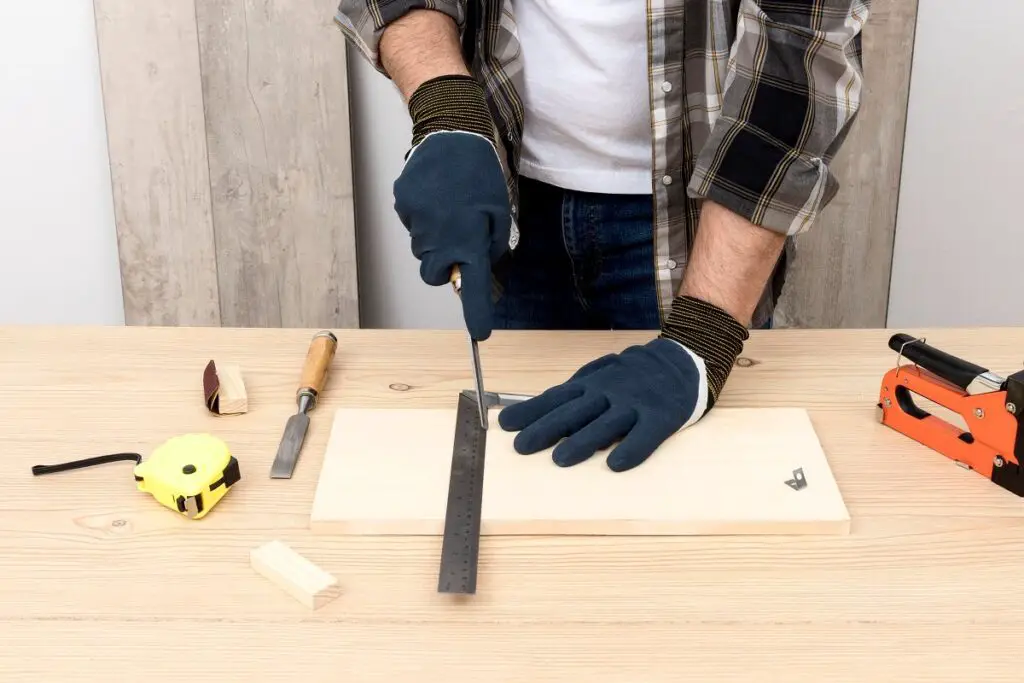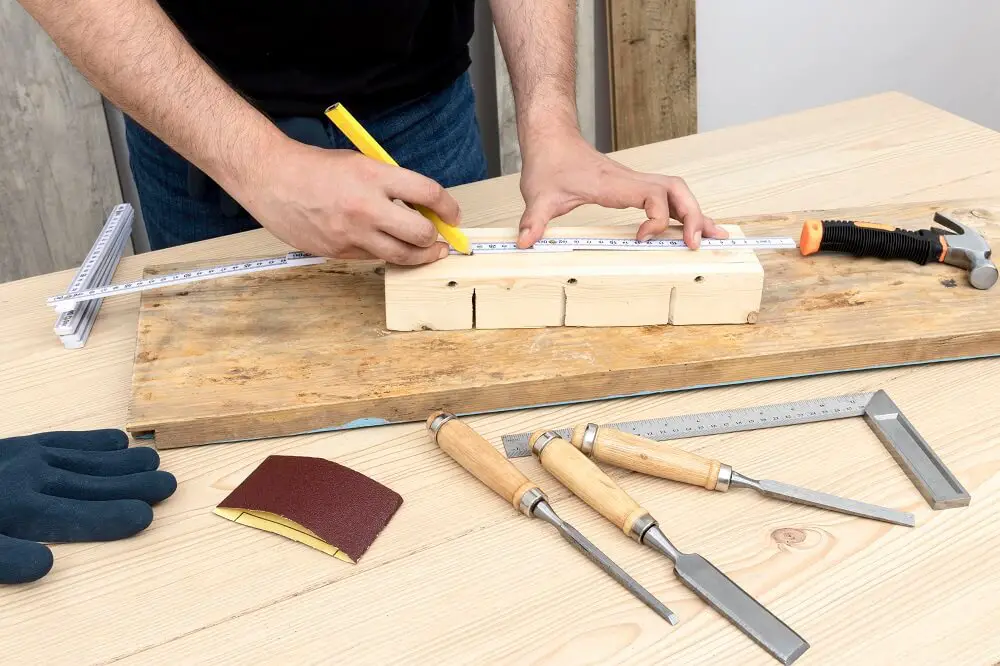Sharp planer blades are essential for achieving smooth, professional-quality woodworking results. But how do you sharpen them effectively? Fear not—this guide will teach you How To Sharpen Planer Blades with ease!
How important is it to have sharp blades? They give surfaces a smooth finish and stop chipping. When blades are dull, furniture won’t lay flat.
To go with your planer blades, you’ll need a honing guide, a grinding stone or sandpaper, and a lubricant like honing oil. Place the blades on the guide and move the sharpening tool steadily, holding it at the correct angle. You should make sure to use the correct way to sharpen your blades.
His story is very instructive. Before starting work, he forgot to check his blades. When he saw chipping, he knew his blades were worn out. He read about sharpening and practiced until he became proficient at it. His craft soon became a work of art!
Sharp planer blades are essential for creating beautiful woodwork. Now that you know how to sharpen them, let’s do it!
The Importance of Sharpening Planer Blades
Table of Contents
For smooth, accurate cuts, planer blades need to be sharpened. Dull blades create uneven areas and work that doesn’t go smoothly. Keeping planer blades sharp not only makes the tool work better but also makes it last longer. Many times, sharpening the blades makes things look cleaner and more professional.
It’s normal for planer blades to dull over time. This results in rough, nicked, and splintered wood. Sharpening the blades restores their cutting edge, making it easier to cut across the wood’s fibers. You don’t have to sand and smooth the wood as much after cutting, which saves time.
Sharp blades don’t have to work as hard on the motors. Sharp blades put less strain on the motor and machine because they require less power to cut the wood. As a result, the planer works better and lasts longer.
A bench grinder or sharpening jig are two ways to sharpen blades. When working with sharp objects, follow safety rules and make sure each blade is ground evenly so that they are all equally sharp.
Smart Tips: Before sharpening, clean the blades and remove any dirt or resin. The blade will have good contact with the grinding wheel, which will make the edge sharper.
Preparation for sharpening planer blades

When sharpening your planer blades, keep in mind the specific blade specifications provided by the manufacturer. Next:
- Use a brush or cloth to thoroughly clean the blades and remove any dirt or rust.
- Carefully inspect the blades for any cracks or chips. If there are any, file them down.
- Follow the manufacturer’s instructions for setting up the sharpening stone. Use lube if necessary.
- To set up the sharpening stone, slide the blades over the stone at a steady angle until the desired sharpness is reached.
- Return the blades firmly to the planer. Use scrap wood to see how well the planer works.
First, safety! Wear gloves and safety glasses throughout the process.
Planer blades will last longer and work better and more accurately if they are maintained and sharpened regularly.
Step-by-step guide to sharpening planer blades
Check the condition of the blades. Make sure the blade doesn’t have any nicks, chips, or unevenness that could affect how well it cuts.
- Unplug the blades from the power source. Be careful when cleaning sharp objects.
- Clean them using a brush or cloth and look for flaws.
- There are several ways to sharpen, such as using a grinder, whetstone, or honing tool. Choose the one that suits you and do what it says.
- When you sharpen, use light pressure and a steady angle.
- Before reattaching the blades, test them on a piece of scrap wood.
- Regular touch-ups will keep the lines sharp. Check and clean the blades to make them last longer.
- To be safe, wear goggles and gloves.
Sharpening your blades is an important part of making them look like a pro. Don’t miss out on the opportunity to do amazing work! Sharpen now!
Reinstalling Sharp Blades
- Prepare the tools: Remove any dirt or rust from them. Putting it back together will not damage your planer.
- Align: Be careful to line up the blades with the holes in the planer. Do what the manufacturer tells you to do. You have to be precise.
- Test and secure: Tighten the bolts and screws. To make sure they are in place, give them a light tug. Use scrap wood to make sure the planer cuts smoothly.
- Tips: Lubricate and maintain the blades liberally according to the manufacturer’s instructions.
- True story: I remember the first time I put the blades back on my planer. I was worried I would ruin it. But after watching a tutorial and doing what it was told to do, it worked. It was great to see my planer working again. Putting the blades back on can be tricky, but with practice and care, it is possible.
Maintenance Tips for Keeping Planer Blades Sharp

Planer blades need to be properly maintained in order to function well and last a long time. If you follow these tips, your blades will stay sharp and ready for any woodworking job.
- Keep the tools clean: Use a stiff brush or compressed air to get rid of any remaining dirt or dust after each use. This will keep the edges sharp and prevent build-up.
- Watch for pits and damage: Carefully inspect the blades for any signs of damage or pitting. Even minor imperfections can prevent something from working properly. If you see any, fix it by removing or sharpening the blades.
- Keep your skills sharp: Over time, planer blades will dull. To keep them sharp, you should regularly use a sharpening stone or a professional cutter. For best results, follow the instructions provided by the manufacturer.
- Store properly: Keep blades in a clean, dry place when not in use. Keep blades protected or stored in a box to keep them in good condition and prevent accidental damage.
Remember that having a sharp blade not only improves your work, it also keeps you safe. With proper care, it is easy to make accurate and smooth cuts.
As a pro tip, buy high-quality new blades as they work better and last longer than cheaper ones.
The Essential Guide to Planer Blade Maintenance
- Why Maintenance Is Important
Regularly maintaining your planer blades will ensure they perform at their best, improve the quality of your cuts, and make your tools last longer. - Signs of Taking Care of Your Blades
Check for rough spots on the finished wood, increased noise during use, or any damage you can see, such as nicks or chips. - Cleaning Your Blades
After each use, use a soft cloth and the right cleaner to remove resin and other debris. Stay away from rough objects that can scratch the blade. - Achieving Sharpening Frequency
Depending on how often you use the blade, it may need to be sharpened every few hours, but if you only use it once, it may need to be done every few months. - Sharpening Methods
For precision, use a honing tool and a stone sharpening wheel. Because they are so hard, diamond grinding wheels are best for carbide blades. - How to store the tool
Keep the blades in a dry place to prevent rusting. To avoid accidental damage, use a protective cover or storage case that is specifically designed for that purpose. - Sharpening by a professional vs. doing it yourself
Check your skill level; if you are unsure of how to get the right angle or technique, you may want to consider professional sharpening services. - Changing the depth of cut and feed rate
Make sure your planer is set up correctly. If you change the depth or feed rate too much, the blades will wear out faster.
By following these tips, you can keep your planer blades in good condition and ensure that they perform well on all your woodworking projects.
In Conclusion:
Finally, sharpening your planer blades is important. It needs to be done carefully and meticulously. With these tips, you can keep your planer blades in great shape, which will make working with wood much smoother.
We’ve talked about how to sharpen blades with a bench grinder or jig saw. Also, safety measures like wearing a mask and gloves for protection.
When cutting, it’s important to keep an angle. This keeps the edge of the blade sharp, which makes cuts smoother. Check your blades often for chips or nicks and fix them immediately to keep them working well.
Sharpening tools takes a lot of practice. The more you work on your skills, the better things will get. Take your time. Pay attention to the very sharp edges.
A pro tip is to buy good new blades. This not only ensures better performance but also makes the tools last longer. Using a sharp blade will make your craft run smoother and get more work done.
Frequently Asked Questions: How to Sharpen Planer Blades
How often do I need to sharpen the blades on my planer?
How often you should clean your planer blades depends on how often you use them. However, as a general rule, you should sharpen them after every 10 to 15 hours of use or when you notice that they are not cutting properly.
What tools do I need to sharpen a planer blade?
A flat file, a grinding guide, a sharpening stone or sandpaper, and a small wire brush. To further protect yourself, safety gloves and safety glasses are recommended.
If I need to sharpen my planer blade, should I do it myself or hire someone to do it?
Planer blades can usually be sharpened by people who know a little about woodworking [A]. But if you’re not sure how to do it or feel comfortable with it, it’s best to get help from a professional to avoid hurting yourself or the blades.
What is the correct angle for sharpening a planer blade bevel?
The best edge angle for a planer blade is usually between 25 and 30 degrees. To make sure the blade is sharpened properly, you should follow the manufacturer’s instructions or talk to a professional.
How can I tell if my planer blades are sharp enough?
Cutting a piece of soft wood is an easy way to tell how sharp a planer blade is. If the blades cut through the wood smoothly, they are said to be sharp. If not, they need to be sharpened further.
Is there anything I should do to protect myself while sharpening a planer blade?
Absolutely! Wear safety glasses and gloves to keep things from getting in your eyes and hands. To keep yourself safe, always keep your fingers away from the edge of the blade and hold the tool firmly. You also need to work on a stable surface or desk.
- WoodRiver Plane reviews | Best Wood Hand Planer In 2024 - 19/10/2024
- The Best Tung Oil: The Ultimate Guide in 2024 - 19/10/2024
- 12 Inch Wood Planer: Smooth Your Woodworking Projects Like a Pro - 01/10/2023